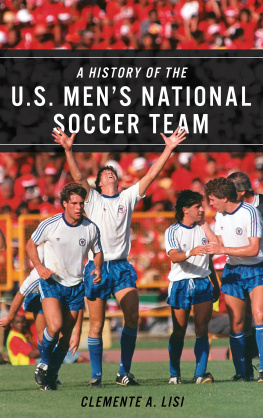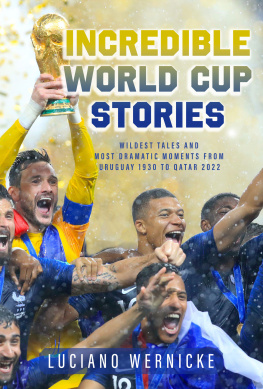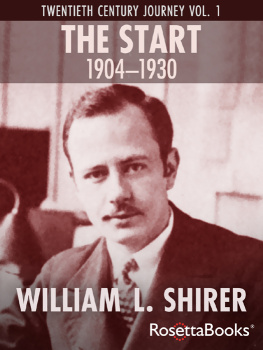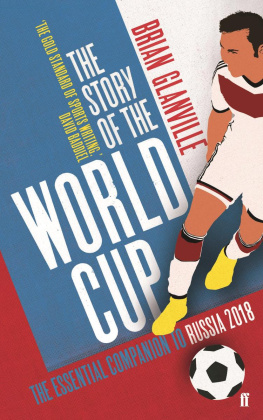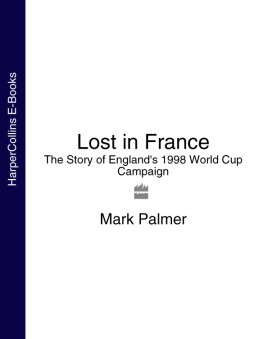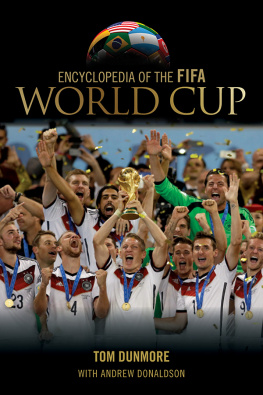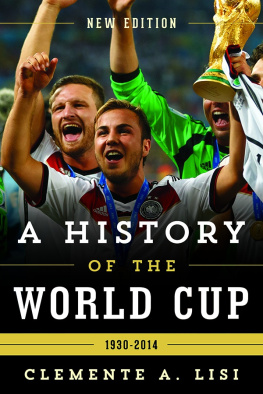A HISTORY OF THE WORLD CUP
1930-2010
Clemente Angelo Lisi

THE SCARECROW PRESS, INC.
Lanham, Maryland Toronto Plymouth, UK 2011
SCARECROW PRESS, INC.
Published in the United States of America
by Scarecrow Press, Inc.
A wholly owned subsidiary of
The Rowman &t Littlefield Publishing Group, Inc.
4501 Forbes Boulevard, Suite 200, Lanham, Maryland 20706
www.scarecrowpress.com
Estover Road Plymouth PL6 7PY United Kingdom
Copyright 2011 by Clemente Angelo Lisi
All rights reserved. No part of this publication may be reproduced, stored in a retrieval system, or transmitted in any form or by any means, electronic, mechanical, photocopying, recording, or otherwise, without the prior permission of the publisher.
British Library Cataloguing in Publication Information Available
Library of Congress Cataloging-in-Publication Data
Lisi, Clemente Angelo, 1975
History of the World Cup, 1930-2010 / Clemente A. Lisi. p. cm.
Includes bibliographical references and index.
ISBN 978-0-8108-7753-5 (pbk : alk. paper) - ISBN 978-0-8108-7754-2 (ebook)
1. World Cup (Soccer)History. 2. SoccerHistory. I. Title.
GV943.49.L573 2011
796.334'668-dc222010049016
The paper used in this publication meets the minimum requirements of American National Standard for Information SciencesPermanence of Paper for Printed Library Materials, ANSI/NISO Z39.48-1992. Manufactured in the United States of America.
To my parentsfor always believing in me and giving me the knowledge to succeed
CONTENTS
FOREWORD
Thomas Dooley
Soccer never ceases to amaze me for its sheer magnitude and ability to elicit a spectrum of emotions. Worshipped by the masses and played by superstars in every corner of the planet, it is the biggest public spectacle in the world. The game's ultimate celebration takes place every four years at the World Cup, where millions upon millions of peoplemen, women, and children from all walks of lifebreak with their daily routines to follow the fortunes of their favorite national teams. Governments close and productivity declines over the four weeks the World Cup is contested. Families travel across time zones and spend large sums of money to attend the World Cup to experience in person the passion and energy of the game.
This is a very difficult feeling to explain, although I participated in both the 1994 and 1998 World Cup as a player for the United States after becoming a citizen of this great country. In 2006,1 experienced my first World Cup as a fan after deciding to travel to my native Germany with my son to check it out. I had watched many previous World Cups on TV, but being in Germany during the month-long tournament was the longest party I had ever witnessed. I could see the passion in the eyes of the people who were there dancing, drinking, and singing in the streets and inside the stadiums. The smell of the freshly cut grass, the sight of fireworks lit before the start of a game, and the enthusiasm generated by a goal were, for me, all part of that World Cup experience.
Soccer for a single month can unite people of different languages and cultures. The people at the World Cup, including me, have one desire and one passion: soccer, football, futbol, futebol, calcio, or whatever you choose to call it in your native tongue. Soccer is truly the international language. It means friendship, enjoyment, joy, and unabashed happinessand every four years it is put on display for everyone to see and experience.
Soccer, and specifically the World Cup, is a multibillion-dollar business that will only continue to grow in the coming decades. Interest on the part of fans will also increase in the coming years. The 2010 World Cup, for example, drew massive interest from around the world. Every play, every goal, every bad call is put under the microscope on Twitter, Facebook, and blogs. The world is a smaller place than when I was a child and enjoyed the World Cup, and the most recent tournament was a wonderful example of just how tiny our planet has become over the last decade alone.
At each World Cup, games are contested and stars are born. Success is celebrated and failure is to be avoided. At the 1994 World Cup played in the United States, an error by Colombian defender Andres Escobar, who deflected the ball into his own goal during the U.S. historic 2-1 victory at the Rose Bowl, ended up costing him his life. Escobar was killed upon his return home, one of the biggest tragedies to ever take place in connection with the World Cup. Almost 16 years later, Escobar is still mourned by his countrymen and teammates.
At the 1966 World Cup, England defeated West Germany in the final, only after Geoff Hurst was awarded a controversial goal that had struck the underside of the crossbar and appeared to bounce down in front of the line instead of over it. The goal was awarded and England won what remains its only World Cup title to date. The goal remains, in my opinion, one of the biggest injustices to ever take place on the field during a World Cup. Some 44 years later, people are still debating it.
Clemente Lisi's book pays homage to this wonderful tournament, which has now been played over a span of 80 years, and concludes with a chapter on the 2010 World Cup. The games, the results, the winners and losers, the behind-the-scenes stories, team histories, and interviews all come together to give new fans, and old ones like me, a better understanding of what the World Cup means to people around the world and in this country.
This is a great book to read, consult, and cherish ahead of the next World Cup in Brazil, where the game is a religion and played by nearly every citizen. I hope to see everyone there in 2014.

American fans in Ohio gather to watch the 2010 World Cup on large-screen TVs in another sign of soccer's popularity in this country (Credit: Columbus Crew).
Thomas Dooley played for the U.S. national team from 1992 to 1999 after becoming an American citizen. He was a defensive midfielder who played at the 1994 World Cup and captained the team at the 1998 World Cup. He played for noted German clubs Kaiserslautern, Bayer Leverkusen, and Schalke 04 before joining the Columbus Crew and NY/NJ MetroStars of Major League Soccer. He retired in 2000 after playing in 95 MLS games and scoring seven goals. Before coming to this country, Dooley won the German league title, known as the Bundesliga, with Kaiserslautern in 1991, and the UEFA Cup with Schalke 04 in 1997. He also coached German club FC Saarbrucken during the 2002-03 season. Dooley was inducted into the U.S. National Soccer Hall of Fame in 2010.
ACKNOWLEDGMENTS
A project of this magnitude requires a lot of help along the way.
I would like to thank the many journalists whose articles and books provided me with information on past World Cups. I also want to thank those who helped make this book possible, including my wife, Kate, for all her patience and for dealing with my absence in the summer of 2010 so I could travel to South Africa for the World Cup. I would also like to thank my parents, Franco and Rachele, and my sister, Paola, for their words of encouragement.
A special thanks goes to J Hutcherson at USSoccerPlayers.com for giving me a place to write about the world's greatest game. I would also like to thank my editors, Stephen Ryan and Kellie Hagan, along with everyone at Scarecrow Press, for believing in this book's updated edition and helping to make it a reality. I would also like to extend my gratitude to all the players and coaches who gave their time so I could compile this extraordinary story. My gratitude also goes to FIFA for providing me with official game reports and access to video and photographs.
Next page

